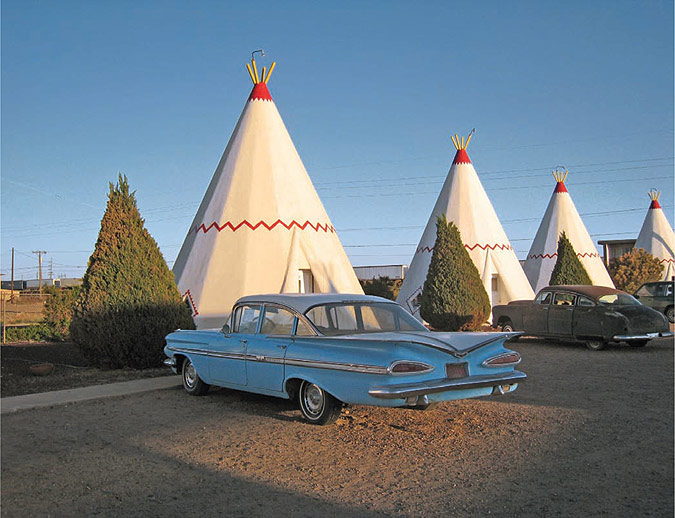
“It winds from Chicago to LA, more than two thousand miles all the way,” as the song goes, inspiring endless Googies and even a vintage television show. And now a new study shows that Nat King Cole’s famous line still rings true as Americans continue to get their kicks along iconic Route 66, to the tune of $132 million per year in economic impact. The National Park Service partnered with the World Monuments Fund and Rutgers University to analyze the economy of the so-called Mother Road as it traverses small towns across eight states.
The first-of-its-kind study combines information from the U.S. Census and extensive research in towns along the route to reveal new details about how travelers interact with communities and attractions and to identify preservation opportunities to further enhance the economic potential of heritage tourism. “This is the first time this Economic Impact Model methodology has been applied to this vast a stretch,” said Erica Avrami, research and education director at the World Monuments Fund. “As a methodology it can serve as a model for other routes and thoroughfares across the country.”
Like rivers or ports that sustained many American cities, Route 66’s continuous stream of motorists proved to be the lifeblood of many small towns across the West.
|
Route 66 stretches through eight states on its way from Chicago to Los Angeles (left). The Art-Deco Tower Conoco Gas Station in Shamrock, Texas, 1936. (right).
Courtesy National Park Service
|
||
Designated a U.S. Highway in 1926, Route 66 was slowly made obsolete as a transportation path by the faster Interstate Highway System’s new roads that bypassed small towns, taking the spending value of passing motorists with it. The decline was complete in 1984 as the last stretch of Route 66 was bypassed by Interstate 40 routed through Williams, Arizona; Route 66 was decommissioned in 1985.
But what the new Interstates offered in speed, Route 66 made up for in character, and a nascent heritage tourism industry has continued to keep the Mother Road alive. The report indicates potential growth in heritage tourism along the highway, but Avrami said there needs to be more unity.
In 1999, Congress passed the Route 66 Corridor Preservation Program under the National Park Service to coordinate preservation work with property owners and nonprofits and issue grants to advance tourism, economic development, and preservation from the road’s historic heyday between 1926 and 1970, but no private group has yet emerged to oversee the process. “A host of federal opportunities exist that can be capitalized on, but because Route 66 goes through so many states, the process is piecemeal,” Avrami said. “Without a unified body, it’s difficult to think holistically because everyone has their own little piece of Route 66.”